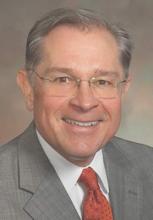The American Medical Association has added 20 schools to its Accelerating Change in Medical Education Consortium in an effort to better prepare students for the rapid change in medical practice.
“With medicine and health care delivery in the United States changing in such new and exciting ways, we’ve asked for and are starting to receive a medical education system that keeps pace with this rate of change,” Dr. James Madara, AMA chief operating officer, said during a Nov. 4 press teleconference. “This means trying new content, giving students information they need to know but in the past haven’t been taught, [and] trying new methods,” such as better understanding whether certain content is better shared through lecture or via simulation or electronic channels.
The program launched in 2013 with 11 schools. The new schools added were culled from proposals submitted by 108 of 170 eligible academic institutions.
“We sought proposals that would significantly redesign medical education and these experts reviewed entries with that goal in mind,” said Dr. Susan Skochelak, AMA group vice president for medical education. “The advisory panel evaluated each school’s proposal based on how the project would align with or enhance the 11 founding schools’ work and the projects’ uniqueness and feasibility for implementation at other medical schools.”
Winning programs cover concepts such as care coordination in accountable care organizations, advanced simulation and telemedicine technologies, and addressing the needs of underserved and diverse communities.
The new schools entering the consortium include A. T. Still University School of Osteopathic Medicine, Mesa, Ariz.; Case Western Reserve University, Cleveland; Eastern Virgina Medical School, Norfolk; Emory University, Atlanta; Florida International University, Miami; Harvard Medical School, Boston; Morehouse School of Medicine, Atlanta; Ohio University Heritage College of Osteopathic Medicine, Cleveland campus; Robert Wood Johnson Medical School, New Brunswick, N.J.; City College of New York Sophie Davis School of Biomedical Education, New York; Thomas Jefferson University Sidney Kimmel Medical College, Philadelphia; University of Chicago; University of Connecticut, Farmington; University of Nebraska, Omaha; University of North Carolina at Chapel Hill; University of North Dakota, Grand Forks; University of Texas, Austin; University of Texas Rio Grande Valley School of Medicine, South Texas; University of Utah, Salt Lake City; and University of Washington, Seattle.
“By tripling the number of schools participating in this effort, we know that we will be able to more quickly disseminate the consortium schools’ innovative curriculum models to create the seismic shift that our medical education system needs so that our future physicians can better care for their patients,” Dr. Madara said.


